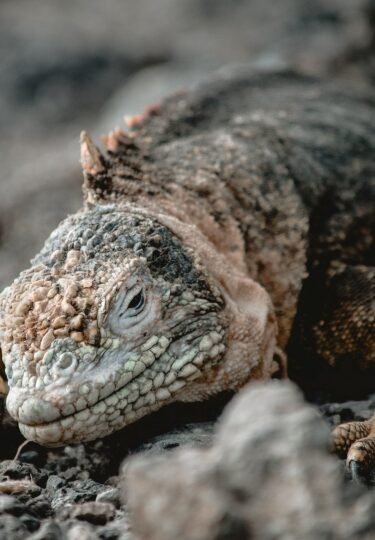You’ve decided to book a Galapagos cruise vacation of a lifetime, and now comes the big decision: which itinerary should you choose? Galapagos Inner vs. Outer Loop, Northern vs. Southern Loop—how do you decide?
Each cruise itinerary departs from and returns to Baltra. You’ll also enjoy an expedition day at the Charles Darwin Research Center on Santa Cruz Island no matter which sailing you choose. On all of our cruise loops, you’ll encounter blue-footed boobies, sea lions, sea turtles, and giant tortoises.
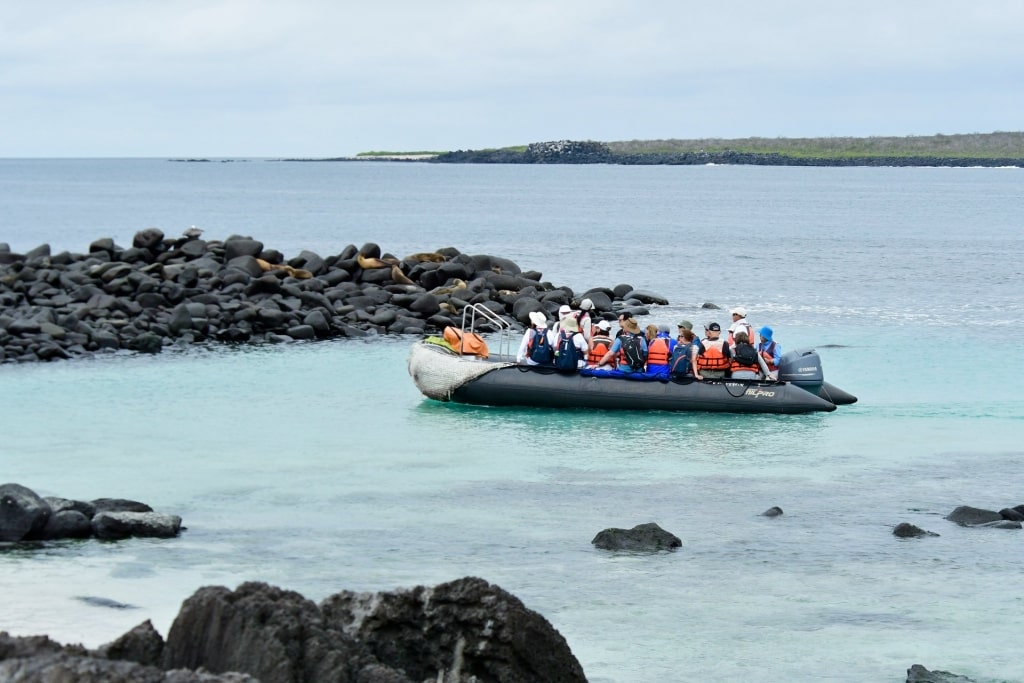
Galapagos
Itineraries also follow a similar daily pattern, visiting at most two islands or sites per day, then cruising overnight so you arrive in the morning refreshed and ready to begin another exciting day of exploration.
Each Galapagos cruise itinerary has been specially crafted to showcase the islands’ flora, fauna, and history that can’t be experienced anywhere else. No matter which loop you choose for your Galapagos Islands vacation, you’ll leave with incredible memories you’ll cherish forever.
Galapagos Inner Loop Itinerary
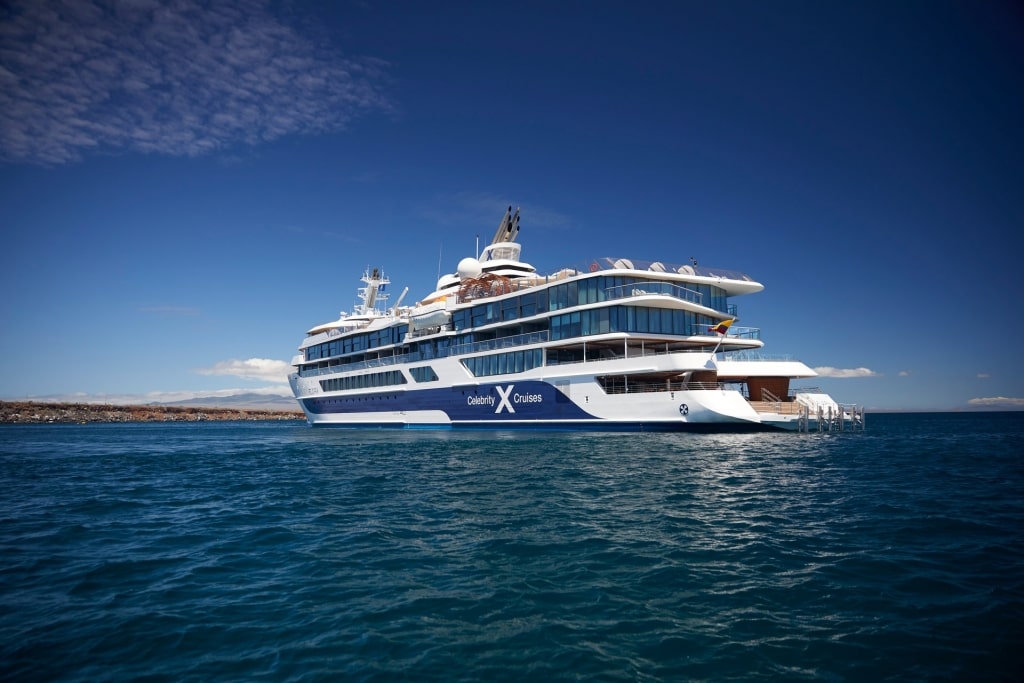
Celebrity Flora
Sail Inner Loop Galapagos cruise itineraries aboard the luxury mega-yacht Flora, Celebrity’s newest expedition ship. This itinerary sails a westward course calling on Daphne Major for your first view of sea lions, tropical birds, and the elusive blue-footed booby.
Egas Point on Santiago offers a black-sand beach, blue-water grottoes, and sights of iguanas, sea lions, Galapagos Hawks and Galapagos fur seals. On a snorkeling excursion, you’ll get glimpses of colorful fish, sea turtles, and sea lions.
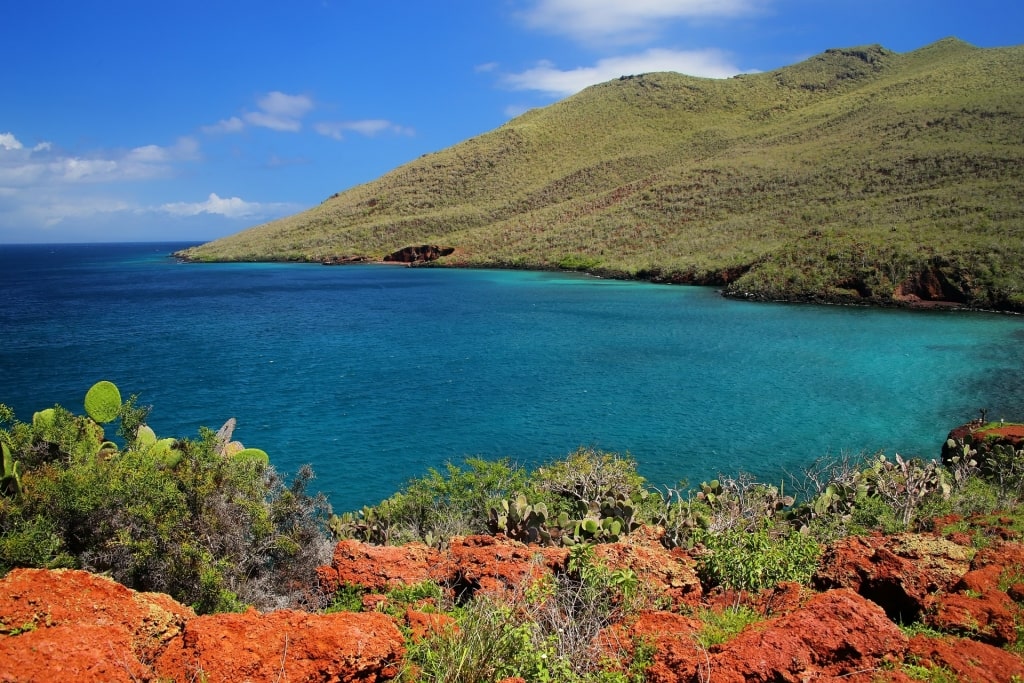
Rabida Island, Galapagos
The red sand, sapphire water, and lush green foliage on Rabida Island will amaze. At Elizabeth Bay, explore this sheltered bay’s unique red mangrove ecosystem and its varied marine wildlife. At Tagus Cove on Isabela Island, see the nesting home of the flightless cormorant and the saltwater Darwin Lake.
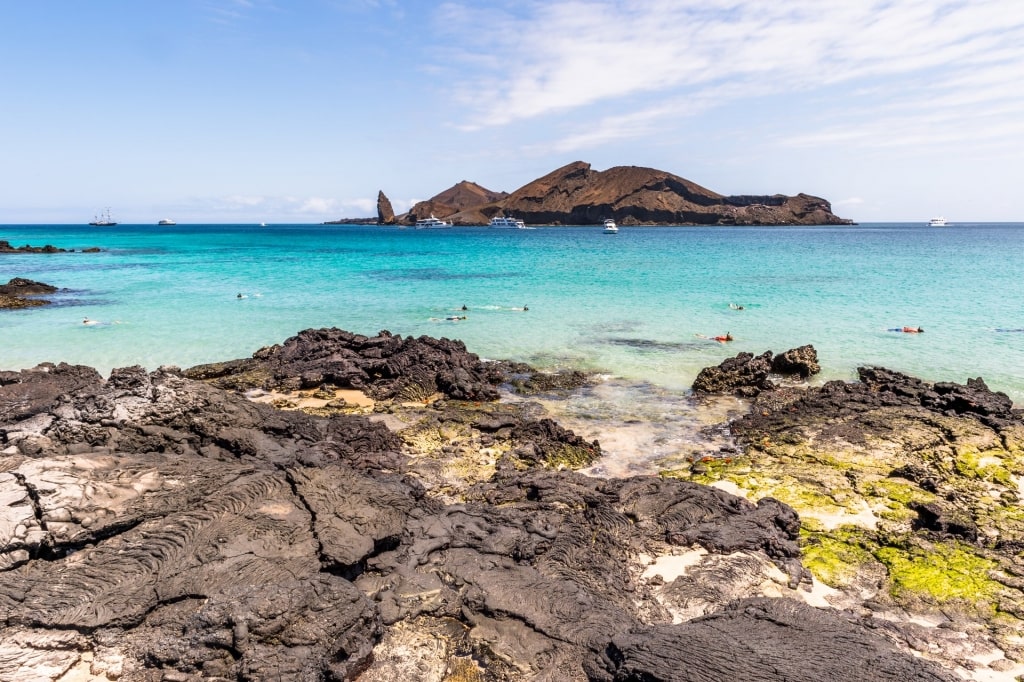
Santiago Island, Galapagos
Fascinating geological landscapes of hardened black lava await on Santiago Island’s Sullivan Bay. Capture images of the barren volcanic landscape and Galapagos penguins on Bartolome Island, where the snorkeling is excellent.
Las Bachas, Santa Cruz Island’s white-sand beach, is one of the largest nesting areas of the Pacifc Green Sea Turtle. You’ll even see flamingos as you walk along the beach.
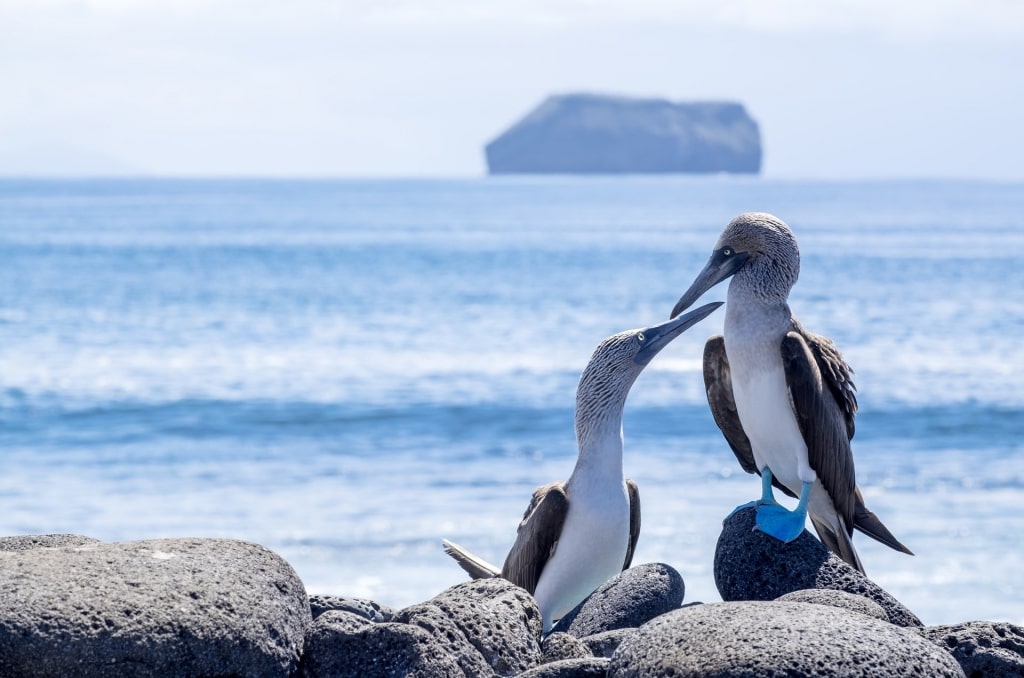
Blue-footed Boobies in North Seymour Island, Galapagos
One of the unique things to do in the Galapagos Islands is to see the largest colony of frigate birds in North Seymour Island. Here, male frigates and male blue-footed boobies conduct impressive mating rituals. Visit San Cristobal Island to shop, walk, and learn about the island, then see a breeding ground for three varieties of boobies.
Galapagos Outer Loop Itinerary
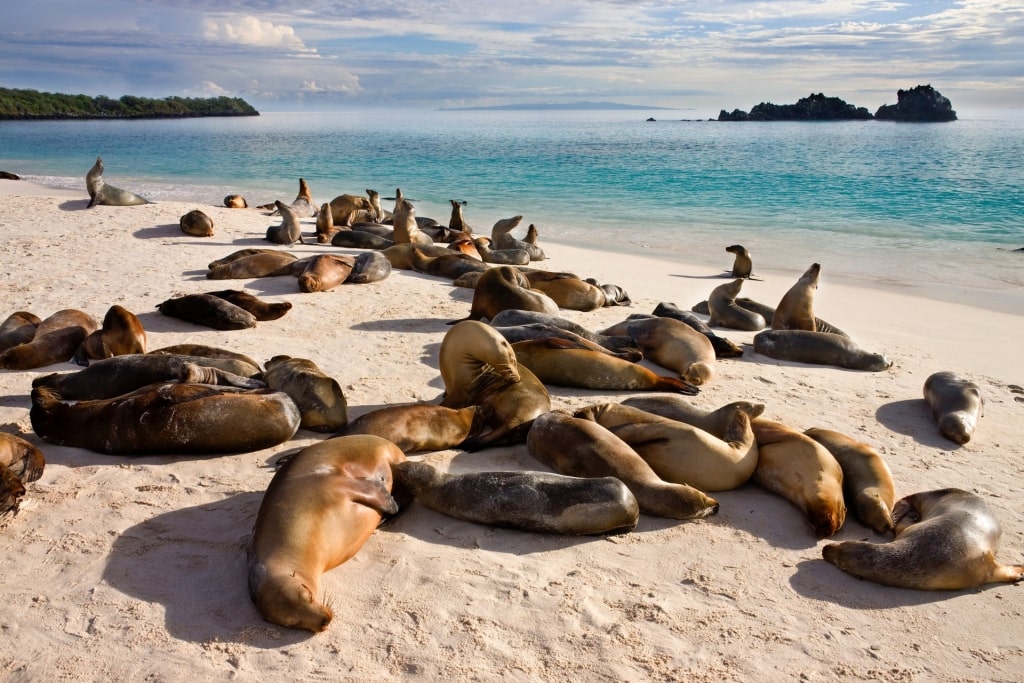
Sea lions in Espanola, Galapagos
Celebrity Flora also sails an Outer Loop itinerary that takes a wide southward approach after a first call at Daphne Island. Gardner Bay at Espanola offers pristine white-sand beaches that invite swimming and relaxing, along with colonies of sea lions. At Espanola, you’ll be amazed at the Waved Albatross.
On Floreana Island, stop first at Cormorant Bay, with its green-tinted sand and brackish lagoon where flamingos and stilts cool off, and sea turtles nest on one special beach. Sail on to Post Office Bay, where leaving addressed postcards in a barrel and sorting through the barrel for mail to deliver at home is an ongoing tradition.
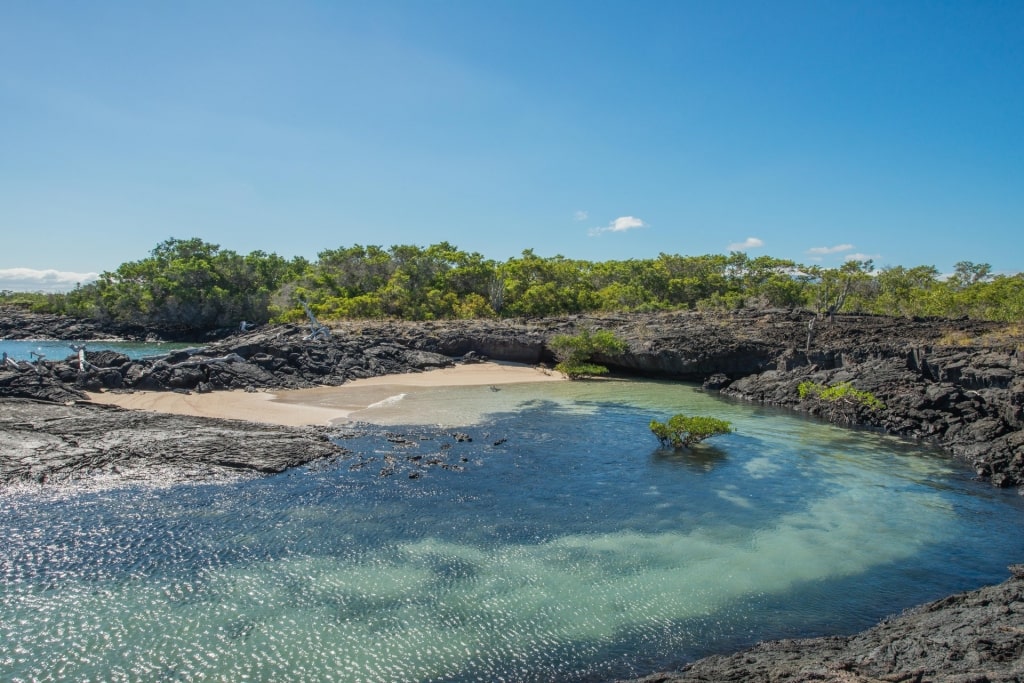
Moreno Point in Isabela Island, Galapagos
At Isabela Island, the largest of the Galapagos islands, stop at Moreno Point, where marine iguanas, sea turtles, sharks, stingrays, and flightless cormorants congregate on land and sea. In Urvina Bay, walk through the remains of an underwater reef and maybe sight a giant tortoise.
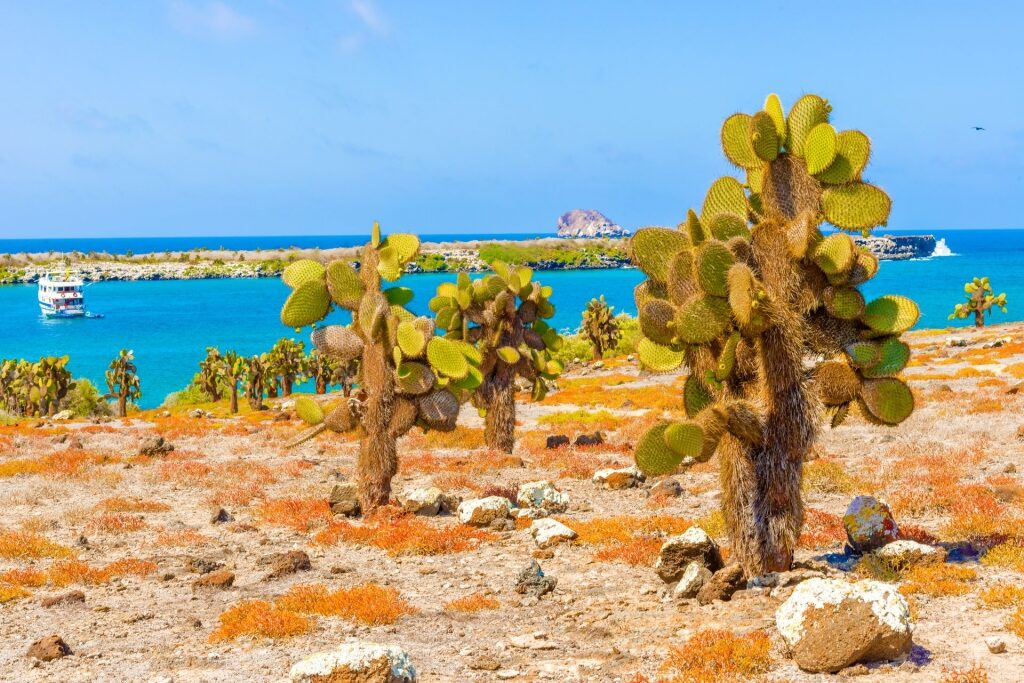
Pear cactus in Santa Cruz Island, Galapagos
At Vicente Roca Point, explore volcanic cliffs and many species of indigenous wildlife. See land dragons, batchelor sea lions, Galapagos cotton plants, and giant prickly pear cactus at two stops on Santa Cruz Island.
Galapagos Inner Loop vs Outer Loop
When deciding on Inner Loop vs. Outer Loop Galapagos itineraries, consider your degree of interest in the flora and fauna of the islands visited on each loop.
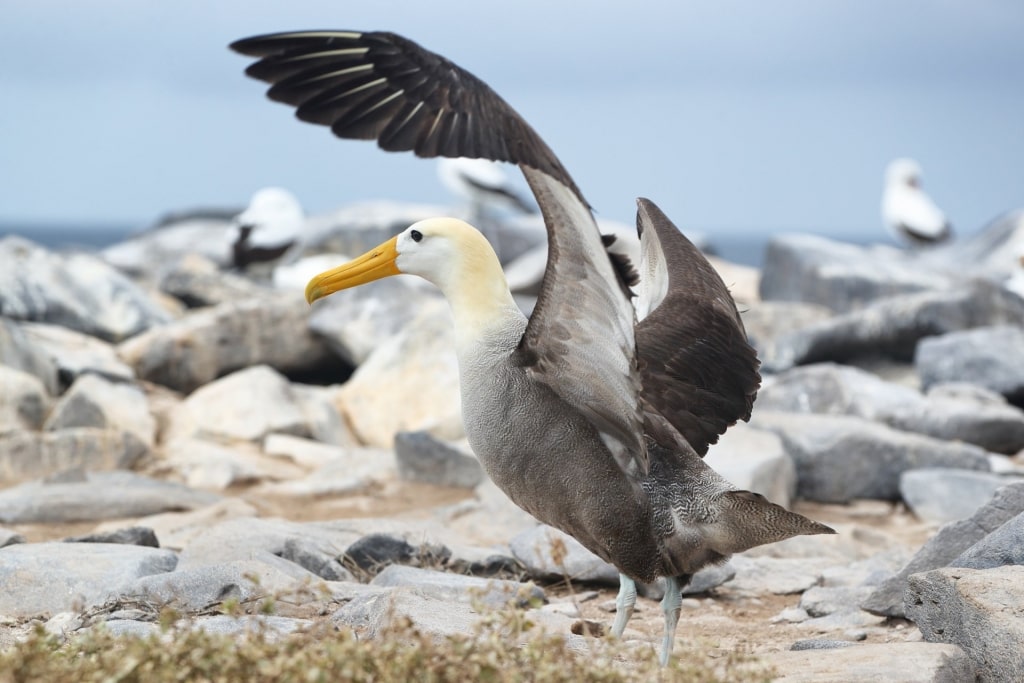
Waved Albatross in Espanola, Galapagos
If seeing the Waved Albatross is on your bucket list, choose the Outer Loop with a stop at Espanola, where most of these incredible Galapagos birds reside.
If you’ve always wanted to see the blue-footed booby, the Inner Loop offers multiple opportunities to witness their mating ritual at North Seymour Island and see two other species of boobies at San Cristobal.
Galapagos Northern Loop Itineraries
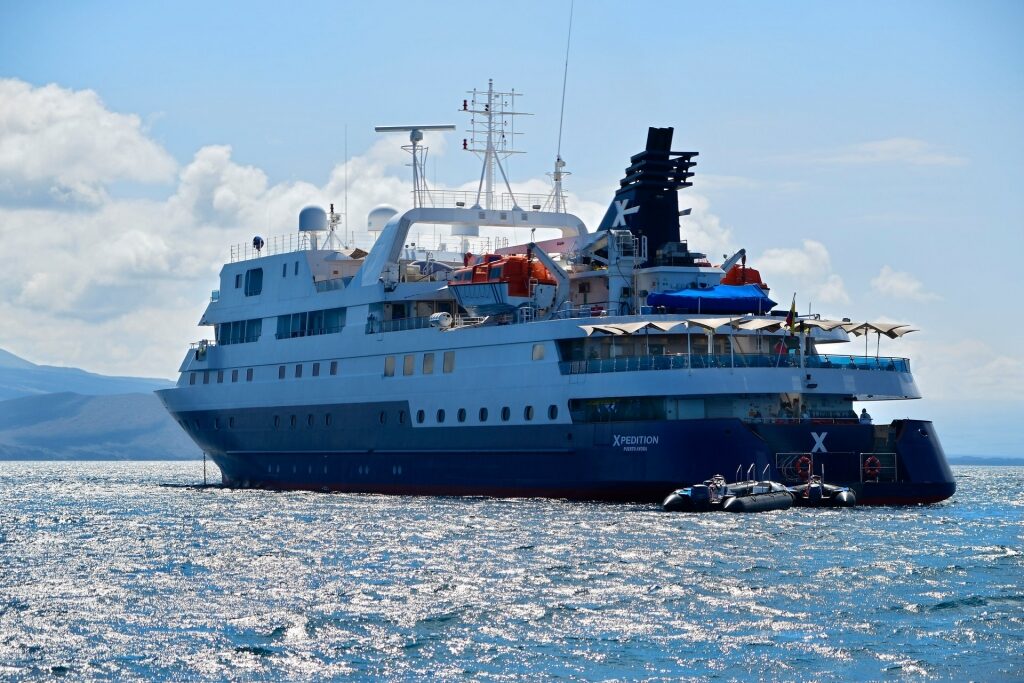
Celebrity Xpedition
On Northern Loop itineraries, sail to islands above the equator on Celebrity’s luxury expedition ships, Xploration and Xpedition.
Aboard Xpedition, start your journey sailing south to Santa Cruz Island to get your first sightings of marine wildlife, including sharks, rays, and sea turtles. At Las Bachas on Santa Cruz, see the largest nesting area of Pacific Green Sea Turtles, and swim or snorkel along the white-sand beach.
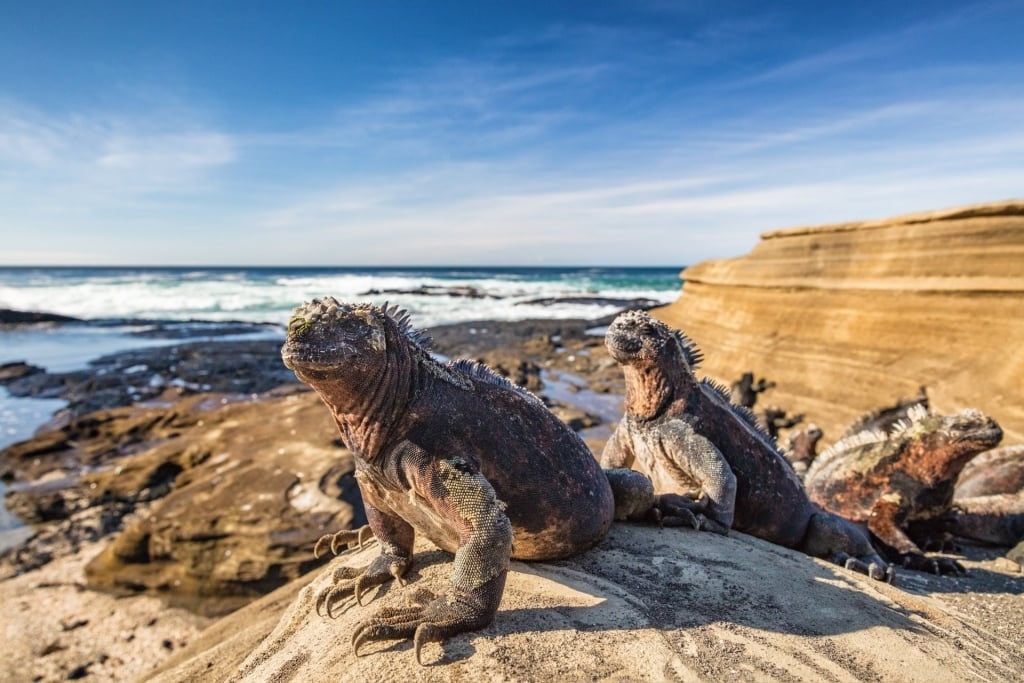
Marine iguanas in Santiago Island, Galapagos
On the red sand of Rabida Island, view colonies of penguins and sea lions. The black-sand beach of Egas Point on Santiago Island shows off Galapagos hawks, marine iguanas, and fur seals, and offers excellent snorkeling.
Isabella Island, the largest of the Galapagos, invites three points of exploration: Tagus Cove, historically a pirate and whalers port and the nesting place of the flightless cormorant; Urvina Bay, where you can witness the landscape disruption caused by a 2015 volcanic eruption; and Vicente Roca Point, where you’ll see marine iguanas and the oddly shaped sunfish.
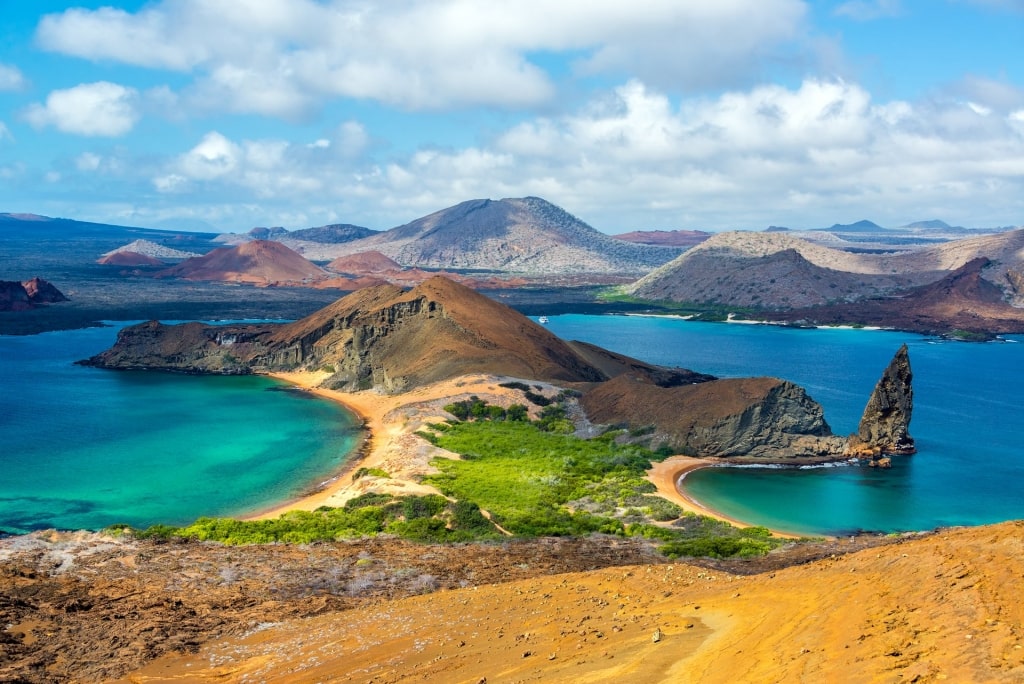
Bartolome Island, Galapagos
Sail to Espinoza Point on Fernandina Island to be impressed by masses of black lava rocks and the largest colony of marine iguanas. Take spectacular photos of Bartolome Island’s moon-like volcanic landscapes and its endemic Galapagos penguins. At Daphne Major, get a fascinating look at the breeding site of the blue-footed booby.
Sail north over the equator to Genovesa Island to see nesting colonies of red-footed boobies and Nazca. At Darwin Bay, soft white sand and deep blue water encourage snorkeling, swimming, and kayaking after witnessing lush mangroves and lots of local wildlife.
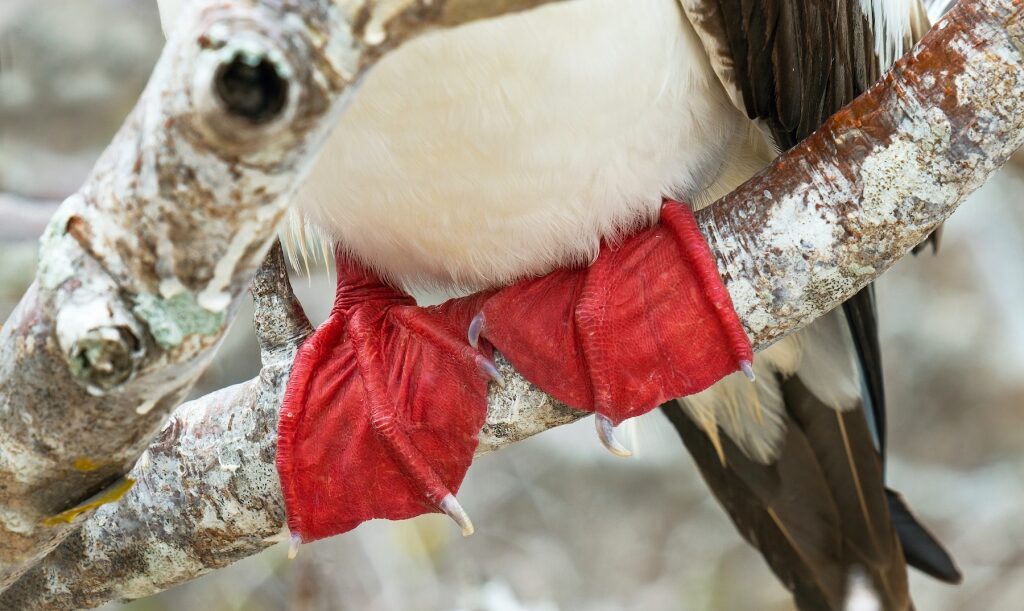
Red-footed booby
On the Northern Loop itinerary aboard Celebrity Xploration, you’ll sail to many of the same destinations covered on Celebrity Xpedition’s itinerary—such as Egas Port in Santiago Island, Vicente Roca on Isabela Island, and Darwin Bay in Genovesa Island.
You’ll also visit Sullivan Bay in Santiago Island, where hardened black rock from a volcanic eruption in the early 1900s covers much of the island’s terrain. Go on a hike and walk among collapsed craters, hardened former lava flows, and tall red scoria cones.
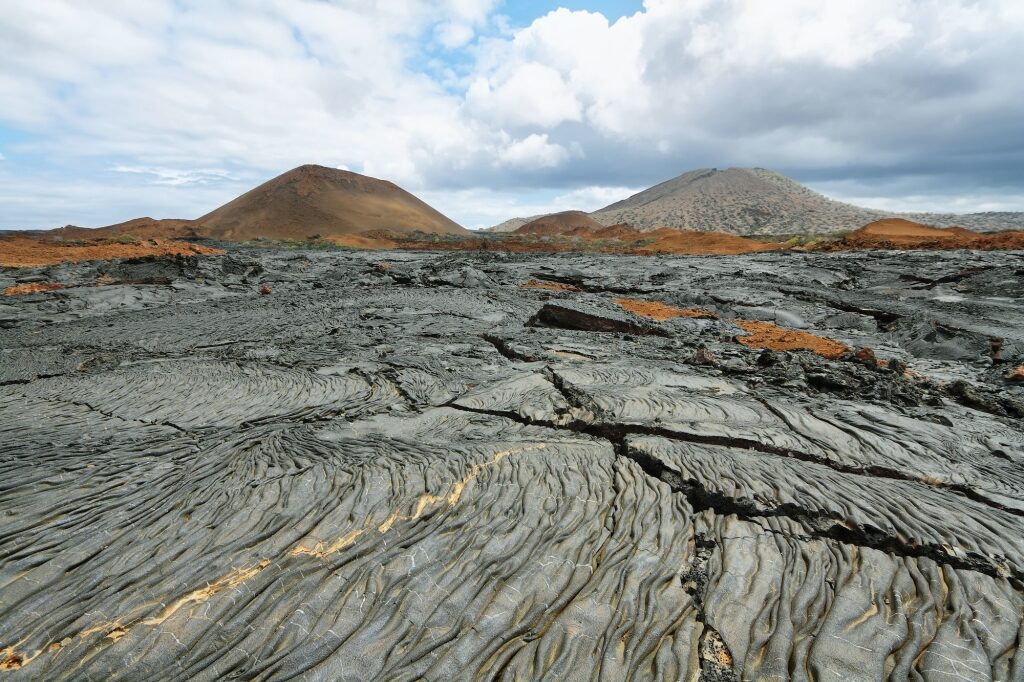
Santiago Island
In the northern end of Santiago Island, you’ll discover Espumilla Beach, a sea turtle nesting site and the home of a Palo Santo tree forest. During your visit, there’s a chance you might even see pink flamingos and white-cheeked pintail ducks in the seasonal lagoon.
In North Seymour, you’ll have a chance to witness the largest colony of frigate birds in the Galapagos and watch a colorful courting ritual as male frigates try to lure potential mates by inflating the bright red pouches in their necks.
Galapagos Southern Loop Itineraries
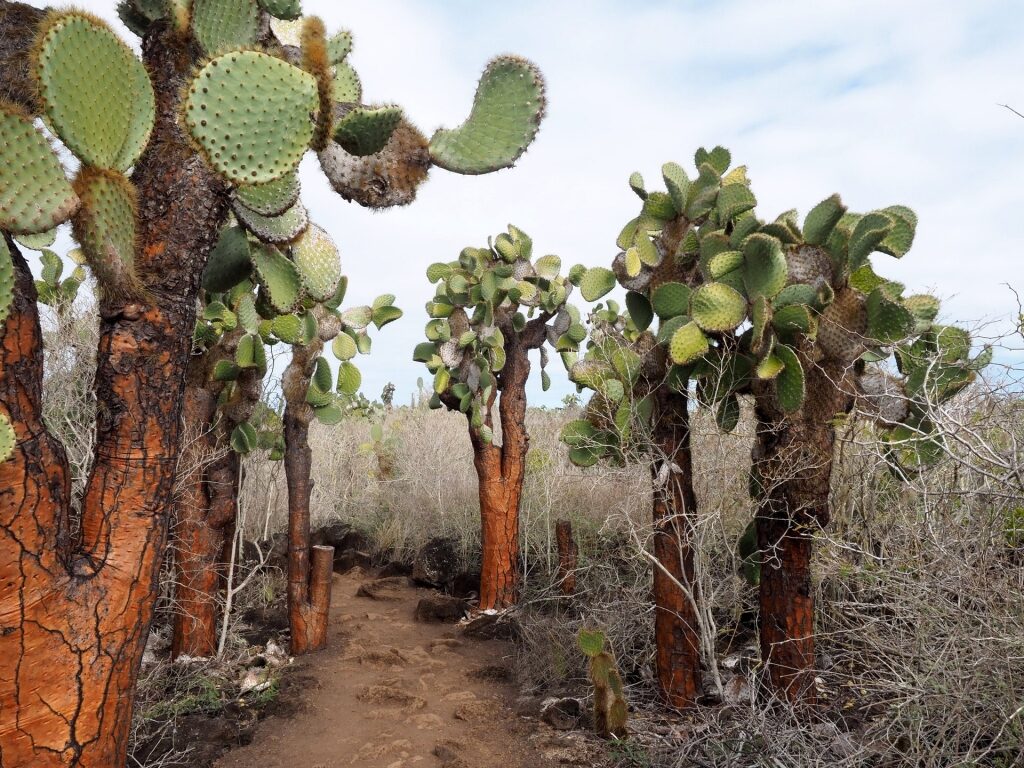
Pear cactus in Santa Cruz Island, Galapagos
Celebrity’s luxury expedition ships, Xploration and Xpedition, also sail Southern Loop itineraries. Your cruise aboard Xpedition begins at North Seymour Island, where you’ll marvel at male frigates and blue-footed boobies doing their impressive mating dance.
Tendered at South Plaza, Santa Cruz Island, see land iguanas walk among giant prickly pear cactus and batchelor sea lions sunning on rocky cliffs. Visit Santa Fe Island to view endemic island species like the Galapagos hawk, snake, and mockingbird.
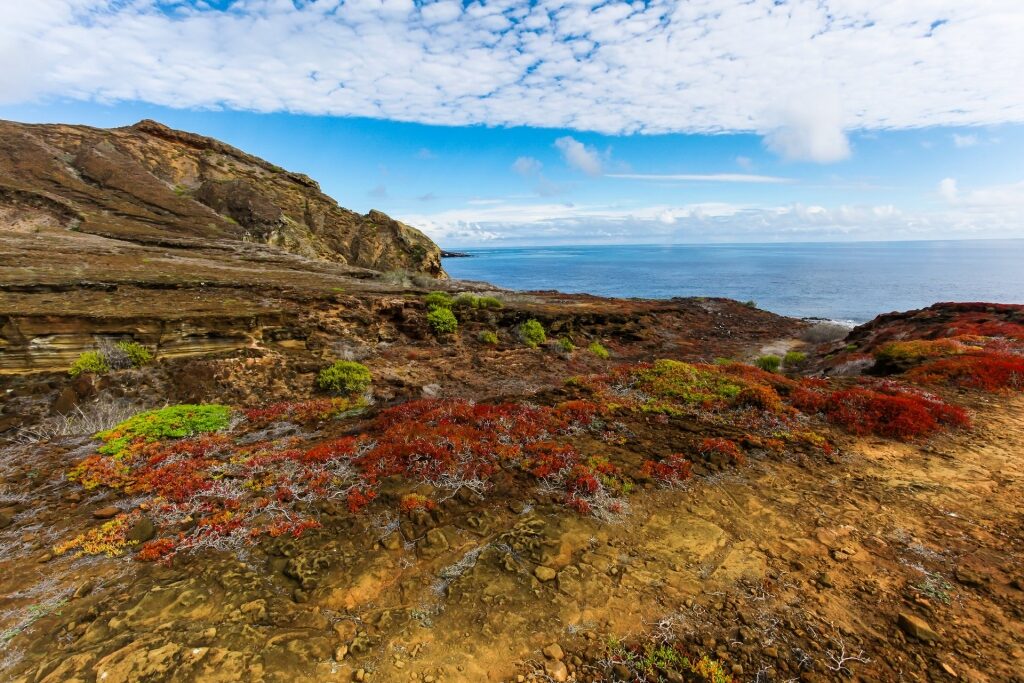
Punta Pitt in San Cristobal, Galapagos
Arrive overnight to San Cristobal Island’s Punta Pitt. Hike for spectacular views and to see the breeding ground of three different booby bird species. Then, visit the waterfront town of Puerto Baquerizo Moreno for a long walk, shopping, or a local tour.
Read: The Ultimate Galapagos Packing List
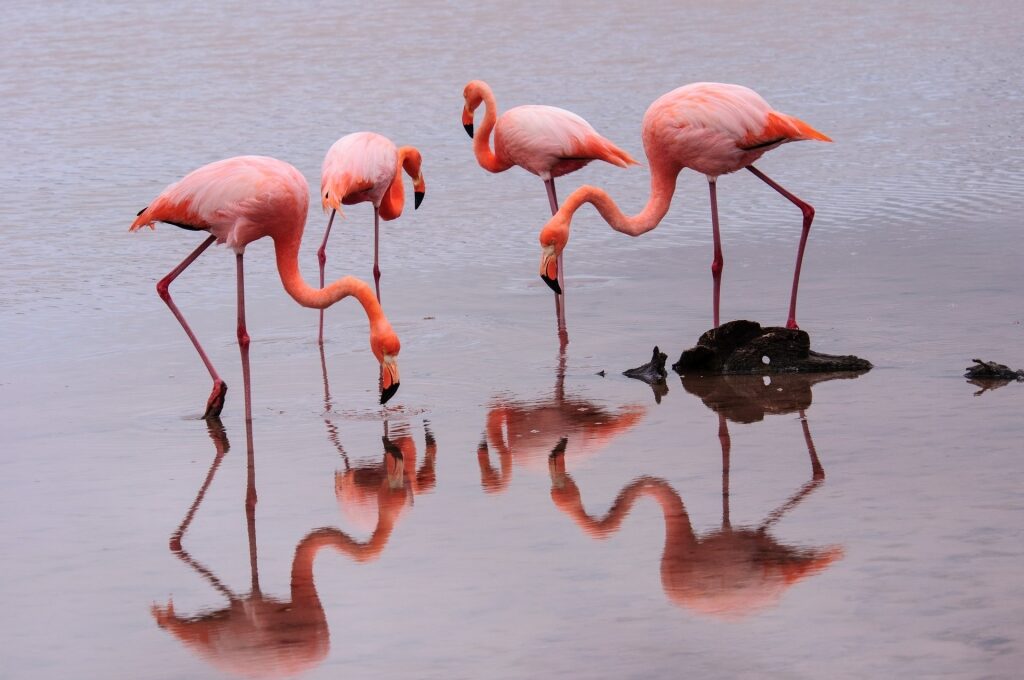
Flamingos in Floreana Island, Galapagos
At Floreana Island, land on green-hued sand and watch flamingos, white-cheeked pintail ducks, and stilts go about their business. At Post Office Bay, drop a postcard in the barrel that’s served as a post office since the 1700s.
Tour the rocky black-lava shores of Moreno Point on Isabela Island, sighting marina iguanas, sea turtles, stingrays, and more. Elizabeth Bay, the westernmost point of the Southern Loop, offers a mangrove ecosystem within its sheltered cove.
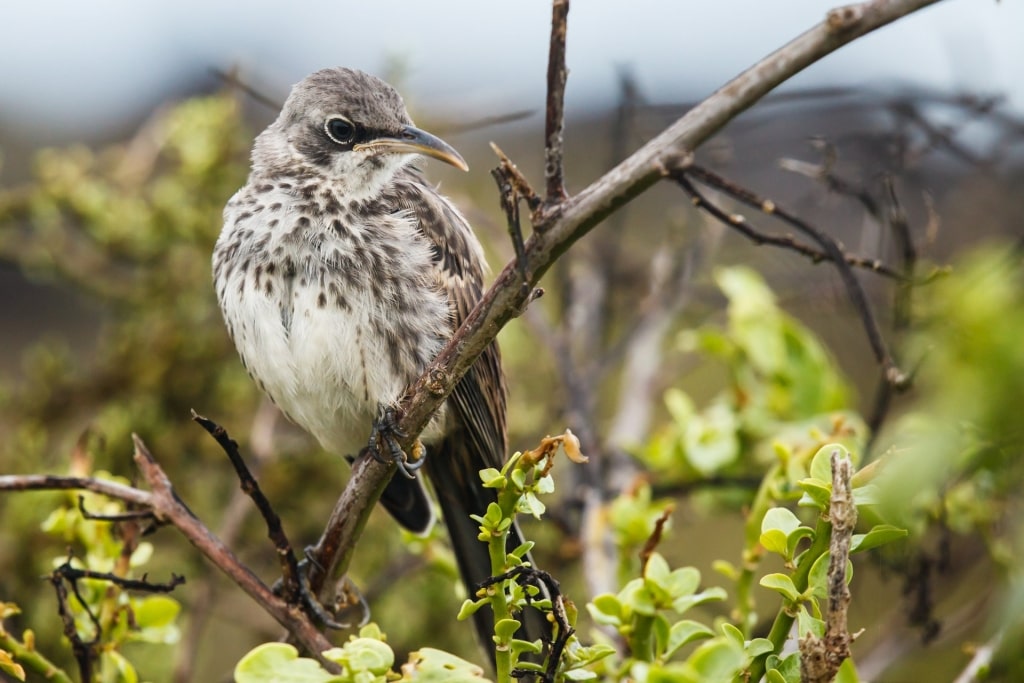
Espanola Mockingbird in Galapagos
Espanola, the oldest Galapagos island, offers two stops: Gardner Bay, where you’ll want to swim in clear blue water from a white-sand beach and see three species of Darwin’s finches and Espanola mockingbirds; and Punta Suarez, home of the Waved Albatross.
Aboard Xploration, start off by sailing to Mosquera, a small islet with one of the largest populations of sea lions in the Galapagos. Then dock in Santa Cruz, where you’ll step foot on Dragon Hill, an area named after the large land iguanas that roam the island. Go hiking around its arid landscape and see if you can spot flamingos at the small lagoons where they occasionally stop to feed.
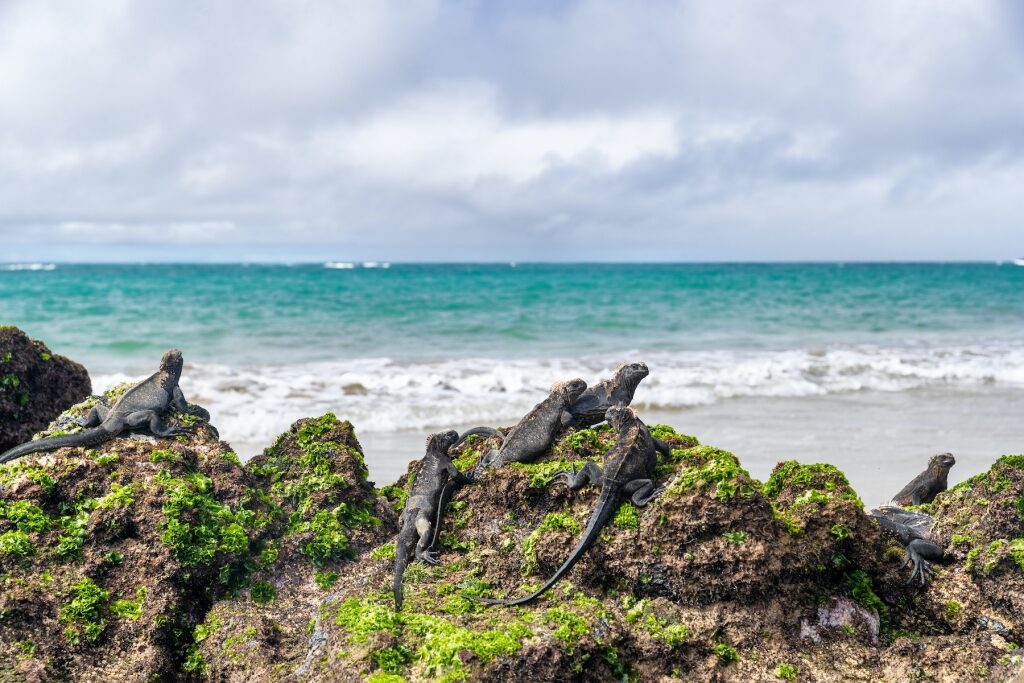
Puerto Villamil
Continue on to Isabela Island with a stop at Puerto Villamil, where you’ll interact with baby tortoises and learn all about the Galapagos giant tortoise at the island’s Tortoise Center. See the Wall of Tears, a 20-foot-high wall that was built between 1944 and 1959 by prisoners that were forced to tear the wall down once they had finished it and start all over again.
In the morning, you’ll arrive at Floreana Island’s Post Office Bay, a place where pirates, buccaneers, and other sailors used to pick up and drop off correspondence. Later in the afternoon, dock in Cormorant Point and dip your toes in the green-hued sand. Look for stilts, flamingos, and white-cheeked pintail ducks swimming in a nearby lagoon.
Spend an entire day at Puerto Ayora in Santa Cruz Island, where most of the population of the Galapagos resides. You’ll also find the Charles Darwin Research Station, an important foundation dedicated to promoting environmental responsibility.
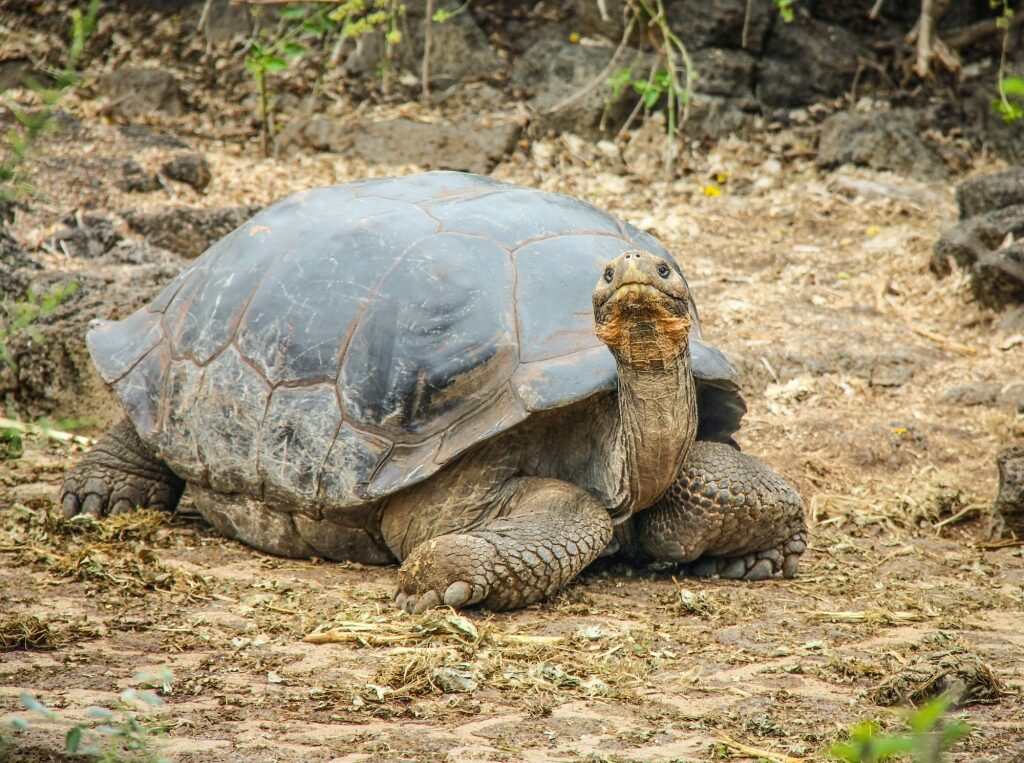
land tortoise at the Charles Darwin Research Station
Sail overnight towards San Cristobal Island and start off by exploring Cerro Brujo on the north coast, where a beautiful white sand beach with warm waters awaits. Once you’re done taking a dip in the ocean, you’ll head to San Cristobal’s Kicker Rock, a volcanic formation that rises over 480 feet above the water, before ending the day in Los Lobos, where you’ll be able to snorkel near sea lion pups.
Galapagos Northern Loop vs. Southern Loop
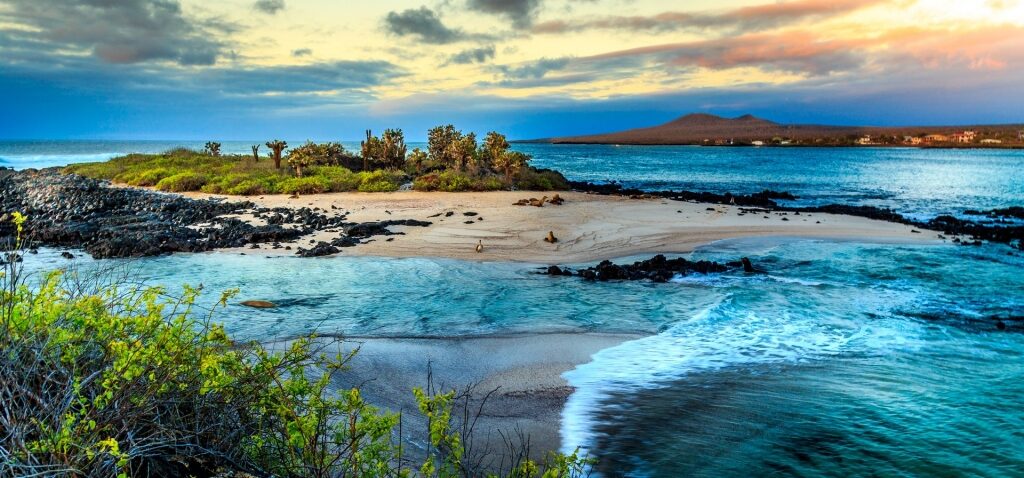
Galapagos
When it comes to deciding between Galapagos Northern Loop vs. Southern Loop, the Southern Loop bypasses the most northern part of Isabela Island, the Galapagos’s largest island, opting instead for Floreana Island, Post Office Bay, and ports of call on San Cristobal Island.
The Northern Loop is the only itinerary that ventures south first, then comes around to sail north over the equator for stops in Genovesa Island and Darwin’s Bay.
Book Your Galapagos Cruise
Ready to book your Galapagos cruise itinerary? See all of our Galapagos itineraries or call our cruise experts at 1-800-852-8086.
